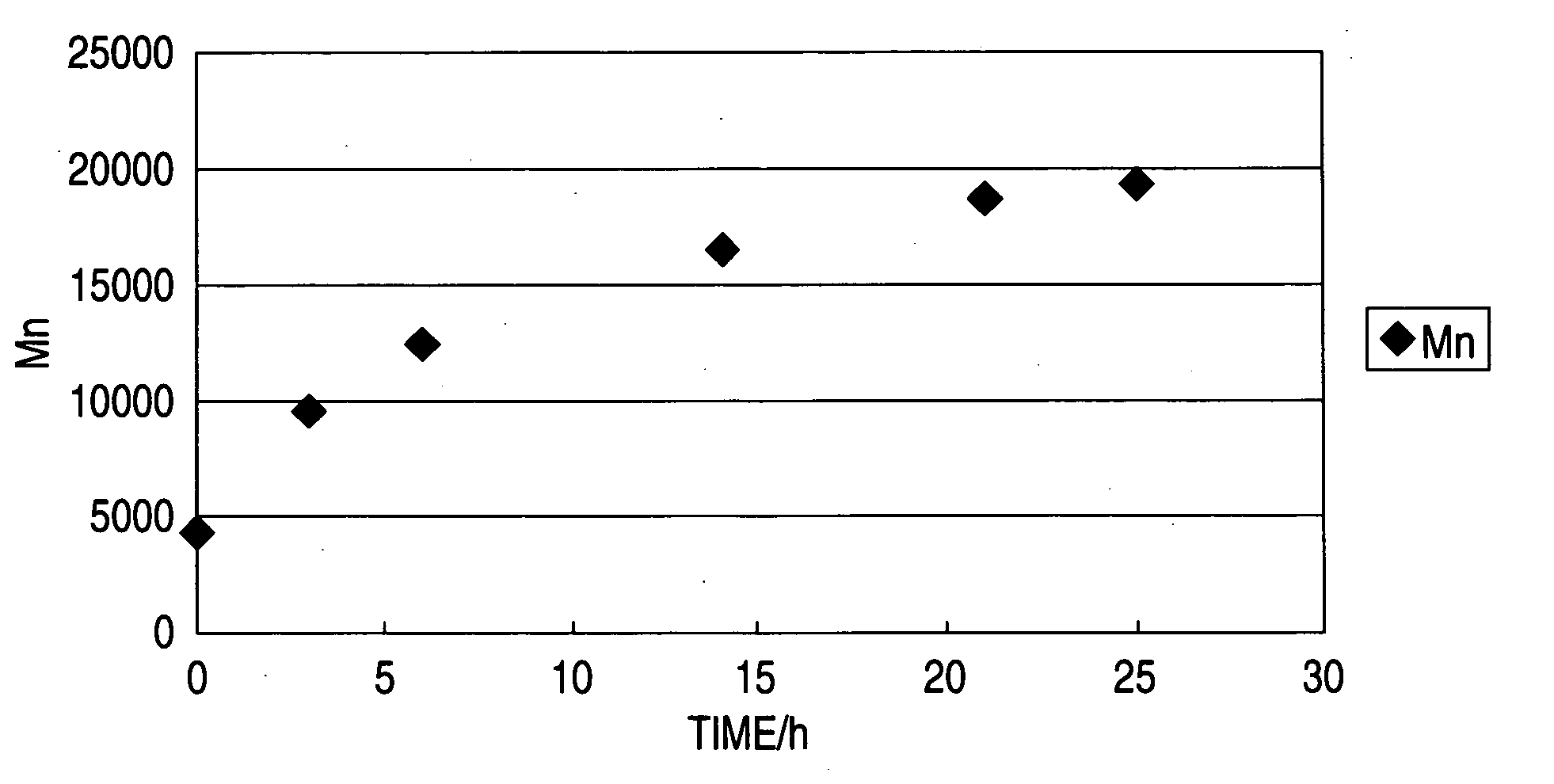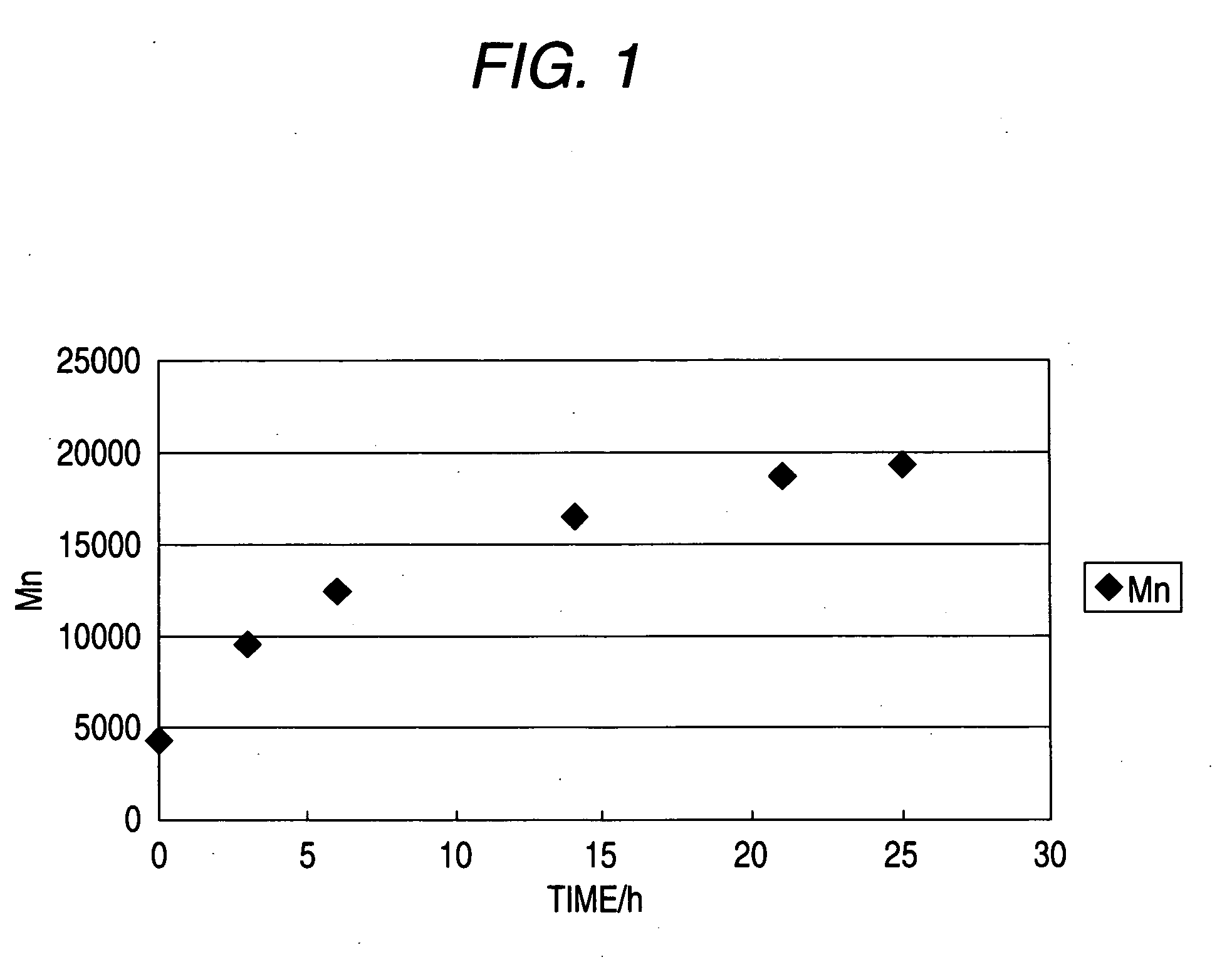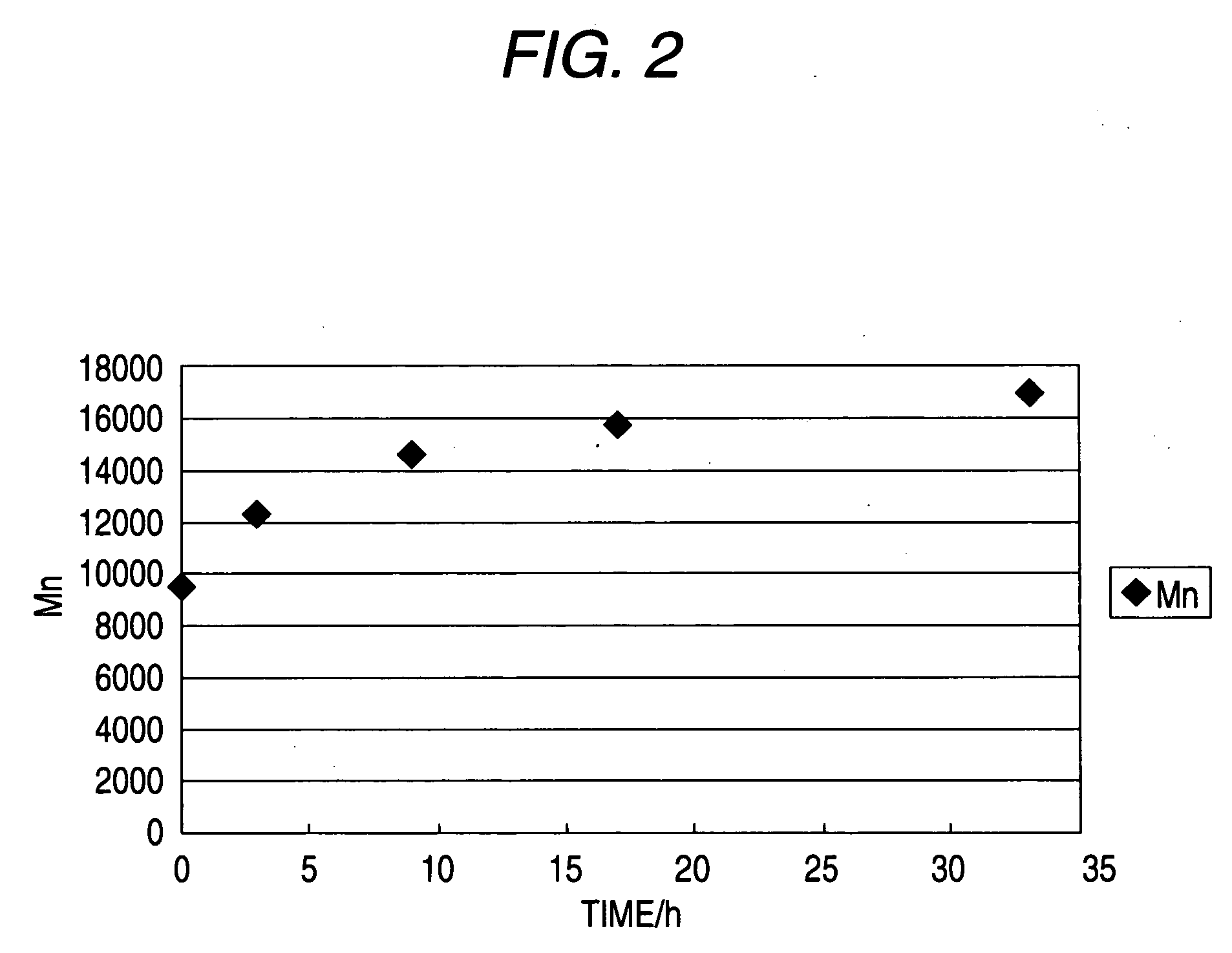Polyvinyl alcohol based block copolymer and pigment dispersion aqueous liquid using the same and recording liquid
a technology of polyvinyl alcohol and block copolymer, which is applied in the field of polyvinyl alcohol based block copolymer and to an aqueous pigment dispersion using the same, can solve the problems of inability to adapt, low heat resistance, and likely coloration, and achieve excellent rub fastness, good dispersion stability of pigments, and good dispersion stability
- Summary
- Abstract
- Description
- Claims
- Application Information
AI Technical Summary
Benefits of technology
Problems solved by technology
Method used
Image
Examples
example 1
Synthesis of PVA-b-poly(methylacrylate-co-t-butyl acrylate-co-sodium acrylate)
[0199] A flask equipped with a condenser, a nitrogen introducing tube, a stirrer, and a thermometer, the inside of which had been purged with nitrogen, was charged with 187 g of vinyl acetate, 375 g of chloroform as a chain transfer agent and a solvent, and 0.5 g of azobisisobutyronitrile as a catalyst, and after bubbling with nitrogen for about 15 minutes, the mixture was heated and subjected to a polymerization reaction under a reflux condition for 150 minutes. After completion of the reaction, the reaction mixture was brought into contact with hexane, and a polymer as obtained by precipitation in hexane was dried in vacuo to obtain polyvinyl acetate. The polyvinyl acetate had a number average molecular weight of 2,914 and a molecular weight distribution of 1.83.
[0200] A terminal structure of this polyvinyl acetate was —CCl3. From the matter that a peak of a methylene group (a peak having a chemical sh...
example 2
Synthesis of PVA-b-poly(sodium acrylate-co-t-butyl acrylate-co-methyl acrylate-co-styrene)
[0209] A flask equipped with a condenser, a nitrogen introducing tube, a stirrer, and a thermometer, the inside of which had been purged with nitrogen, was charged with 445 g of vinyl acetate, 320 g of chloroform as a chain transfer agent and a solvent, and 0.51 g of azobisisobutyronitrile as a catalyst, and after bubbling with nitrogen for about 15 minutes, the mixture was heated and subjected to a polymerization reaction under a reflux condition for 150 minutes. After completion of the reaction, the reaction mixture was brought into contact with hexane, and a polymer as obtained by precipitation in hexane was dried in vacuo to obtain polyvinyl acetate. The polyvinyl acetate had a number average molecular weight of 5,100 and a molecular weight distribution of 1.96.
[0210] A terminal structure of the foregoing polyvinyl acetate was —CCl3. From the matter that a peak of a methylene group (a pea...
example 3
Synthesis of PVA-b-poly(sodium acrylate-co-methyl acrylate-co-sodium methacrylate-co-benzyl methacrylate)
[0215] A flask equipped with a condenser, a nitrogen introducing tube, a stirrer, and a thermometer, the inside of which had been purged with nitrogen, was charged with 441 g of vinyl acetate, 464 g of chloroform as a chain transfer agent and a solvent, and 0.5 g of azobisisobutyronitrile as a catalyst, and after bubbling with nitrogen for about 15 minutes, the mixture was heated and subjected to a polymerization reaction under a reflux condition for 150 minutes. After completion of the reaction, the reaction mixture was brought into contact with hexane, and a polymer as obtained by precipitation in hexane was dried in vacuo to obtain polyvinyl acetate. The polyvinyl acetate had a number average molecular weight of 3,800 and a molecular weight distribution of 1.96.
[0216] A terminal structure of the foregoing polyvinyl acetate was —CCl3. From the matter that a peak of a methylen...
PUM
| Property | Measurement | Unit |
|---|---|---|
| molecular weight distribution | aaaaa | aaaaa |
| molecular weight distribution | aaaaa | aaaaa |
| temperature | aaaaa | aaaaa |
Abstract
Description
Claims
Application Information
 Login to View More
Login to View More - R&D
- Intellectual Property
- Life Sciences
- Materials
- Tech Scout
- Unparalleled Data Quality
- Higher Quality Content
- 60% Fewer Hallucinations
Browse by: Latest US Patents, China's latest patents, Technical Efficacy Thesaurus, Application Domain, Technology Topic, Popular Technical Reports.
© 2025 PatSnap. All rights reserved.Legal|Privacy policy|Modern Slavery Act Transparency Statement|Sitemap|About US| Contact US: help@patsnap.com



